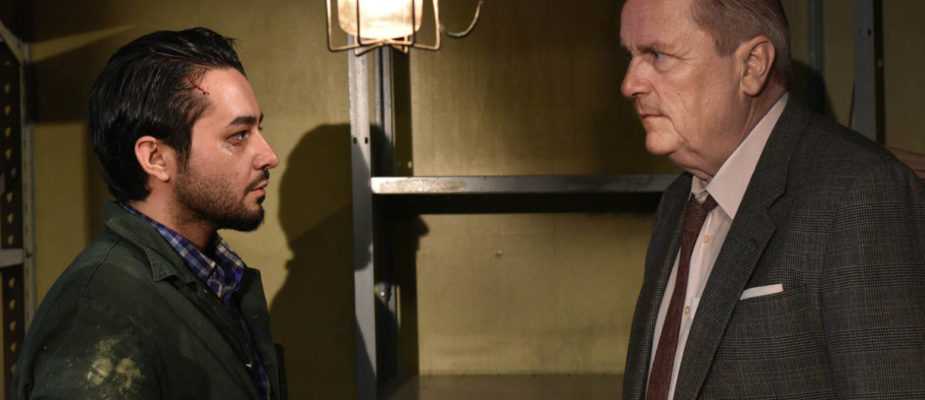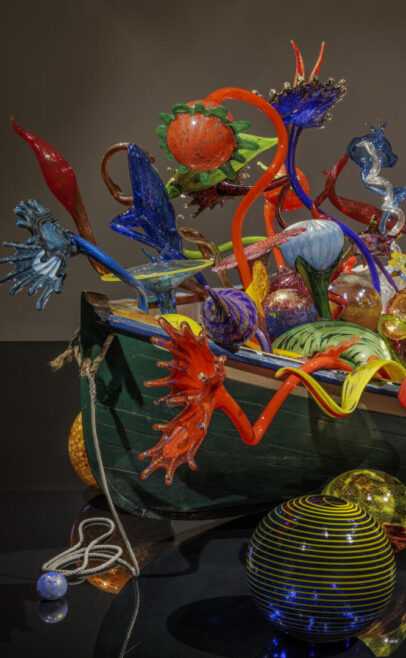Few films were more of their moment this year—in the very best sense as it engaged critically with a global human tragedy, and did not simply reflect the rancid spirit of our times—than was Aki Kaurismäki’s The Other Side of Hope (2017; screening December 15-17 at OKCMOA). The second of the Finnish director’s “port cities” series, following his 2011 masterwork, Le Havre (which plays Thursday, December 14 only), The Other Side of Hope finds the Syrian Refugee Crisis arriving on Finnish shores—literally, with the displaced Khaled (Sherwan Haji) emerging, by cover of night, on a cargo ship, from under a mountain of coal. His face blackened by the soot, in a momentary misidentification of his racial identity, Khaled will soon clean himself up and declare his desire for amnesty, setting a process in motion that will indict the callousness of the northern European nation. Kaurismäki’s profoundly humanistic latest, needless to say, is an exceedingly angry art-house entertainment, a work that implicates rather than simply laments.
In the meantime, Wikström (Sakari Kuosmanen), a middle-aged married Finn, leaves his house keys and wedding ring on the dining room table, to his glowering wife, before setting out on a process of professional reinvention that will culminate in his purchase of the Golden Pint restaurant. Though Wikström and Khaled momentarily cross paths early on, with Wikström stopping his shiny black sedan for the pedestrian Khaled, Kaurismäki mostly tells their two stories in parallel, cutting between the two threads until they converge finally close to the one hour mark of the ninety-five minute feature. Up to this point, the Khaled narrative, though it maintains many of the semantic features of the Kaurismäkian universe—most notably the intractable performance style of the actors, of which I have much more to say below—nonetheless exhibits a somewhat different approach than is typical for the filmmaker, one that relies more heavily on the news of the day (there is even on-screen Syrian war footage), an approach that provides a more pointed political critique (the rise of Neo-Nazism and the aforementioned political cowardice of the Finnish state) than is typical for Kaurismäki. For the Wikström story, by comparison, we get signature Kaurismäkian comedy all the way (as well as the brief appearance of the axiomatic Kati Outinen, who delivers a great description of Mexico I won’t spoil); in this second section, the hero trades his apparel business for the aforesaid watering hole, in the manner of his great Drifting Clouds (1996), complete with an oddball cast of employees who serve up sardines in a can to silently appreciative customers, when they aren’t found sleeping standing up, covered in cobwebs, and smoking lit cigarettes, naturally enough.
What both parts share are the same hardscrabble, 1930s brand social consciousness, their decidedly visual brand of storytelling—Kaurismäki himself released one of the last artistically successful, or at least interesting silent films, 1999’s Juha—and the commensurate emphasis on objects, which connects the director to such great directors of the past as Fritz Lang, and of course the assorted trappings of his immediately recognizable manneristic style. We encounter a world of flat, Fassbinderesque primary hues and apricot paneling, slicker Finns clad in dark suits, and a persistent musical thread of rockabilly, surf guitar, and Finnish tango all performed diegetically, within the space of the story. Kaurismäki, indeed, is offering up something like a catalogue of stringed instruments, especially when also adds the lute that Khaled briefly borrows, across the many performative musical set-pieces that adorn the Leningrad Cowboys Go to America (1989) director’s latest.
Most of all, though, The Other Side of Hope is a film that concentrates its effects in, and is ultimately about the largely (though not entirely) inexpressive performances that dominate the work. As always, Kaurismäki’s performances are “Bressonian,” which is to say they mostly lack an emotive dimension in the manner of French master Robert Bresson’s actors or as he described them, models. (The latter’s L’Argent [1983] appears to be an especially conspicuous point of departure for his Finnish follower, with the younger director’s treatment of currency representing another inheritance.) In The Other Side of Hope, this stylistic choice carries an increasing wealth of meaning: to begin with, there is the inherent suitability of the Bressonian approach for the hyper-reserved Finnish (interpersonal) manner. What was initially formalist stylization in one context becomes a fundamental expression of national character in another. Then there is something closer to its French source: the blank performance style’s referential relationship to the mysteries of personality and memory. When someone from Khaled’s past appears late in the film, with hardly a glimmer of joy despite Khaled’s own warming countenance, Kaurismäki reminds us of the terrible weight of memory of his film’s refugee subjects. Parenthetically, this same character’s failure to remember a detail from her shared childhood with Khaled is one of the saddest revelations in ages (as it underscores the same horrible personal consequences of a life lived in the midst of endless war; American foreign policy of recent years is another object of the film’s razor-sharp critique).
Lastly, there is the filmmaker’s exercise of metaphor to describe his actors’ performance style, namely the poker-faced, established in this case by Wikström’s participation in a poker game to earn the funds for his culinary endeavor. As the director’s camera cuts across the high-stakes table, the same lack of expressivity that is encountered in every other aspect of Finnish life is once again manifest, this time in a more familiar setting. Here, Kaurismäki gives verbal description to his manneristic direction of actors, the poker-faced again, while comedically signaling the absurdity of playing poker with a group of Finns. Wikström’s success, one should also mention, likewise separates his fate from that of Khaled’s, whose end has been determined by the accidents of birth and ethnicity.
The Other Side of Hope never shies from the world that we and the film both inhabit, from the bleak fate that the film’s refugee population must face (not exactly new for the Match Factory Girl [1990] director), whether it is the stories from the front that Khaled describes to the camera and his off-screen interlocutor or to the dark rise of right-wing nationalism across Eastern and Northern Europe, a threat that Khaled faces as even after he has escaped the horrors of Aleppo. On the other end of the tonal spectrum there is also the delightfully inept attempts of the restaurant to rebrand as a sushi joint, something that will leave of tour bus of Japanese travelers with their own experience of a very different, culinary horror. That Kaurismäki so successfully juggles both is no mean feat, nor is the final act fusion of the storylines and tones. Here, in the film’s very last scene, staged along a sleepy industrial waterfront, we see both the cruelty of fate once again, and also great joy, which in this fleeting moment is uncharacteristically rendered on Khaled’s face.
***
For this writer, The Other Side of Hope ranks among the best new releases to premiere at the Oklahoma City Museum of Art in 2017. Excluding films such as Toni Erdmann and Elle that premiered elsewhere locally this year, before receiving second-runs or belated one-offs at the Museum, and Edward Yang’s Taipei Story (1985), an overwhelming, never-before-released masterpiece (simply because it was made more than thirty years ago), my choice for the ten best Museum Films Oklahoma City debuts of 2017 were, in the order in which they were shown: Mia Hansen-Løve’s Things to Come, Eugène Green’s The Son of Joseph, Albert Serra’s The Death of Louis XIV, Terence Davies’s A Quiet Passion, Bertrand Bonello’s Nocturama, Matías Piñeiro’s Hermia & Helena, Frederick Wiseman’s Ex Libris – The New York Public Library, Agnès Varda & JR’s Faces Places, Cristi Puiu’s Sieranevada, and The Other Side of Hope. If you came to the Museum for these films this year, not to mention the repertory work of Kenji Mizoguchi and Akira Kurosawa, Andrei Tarkovsky, David Lynch, Frank Tashlin, Jacques Demy, Varda, Maren Ade, Julien Duvivier, and many, many more, you truly saw the best that the Museum, and let’s just say it, the cinema had to offer.









